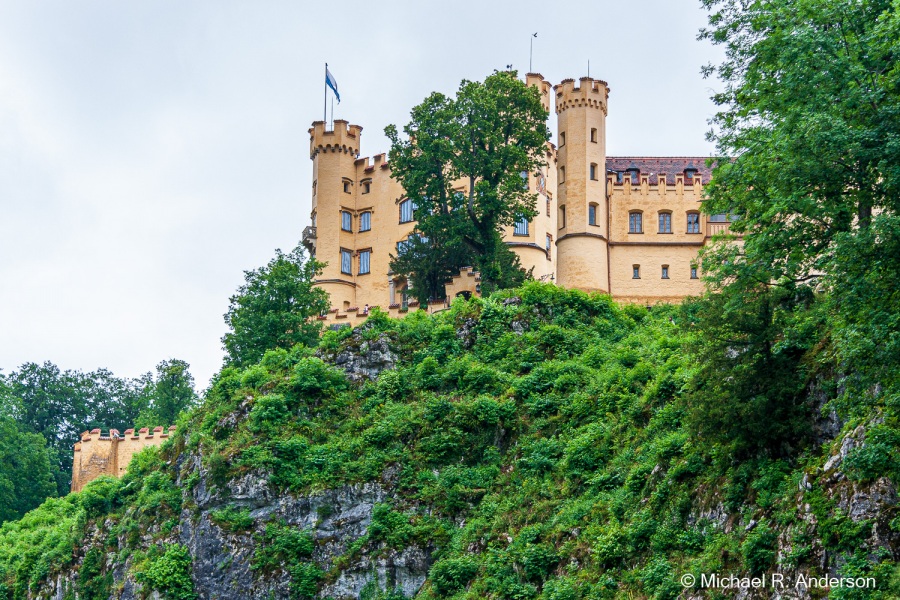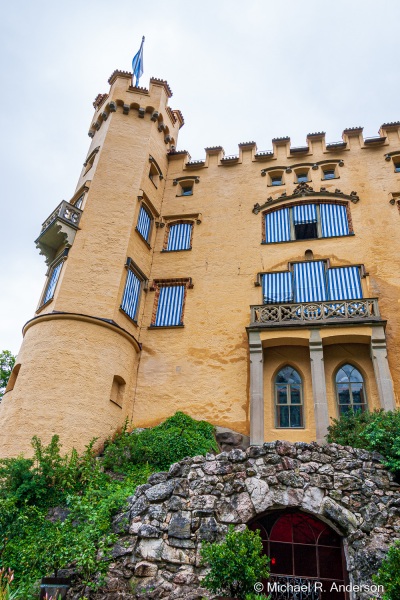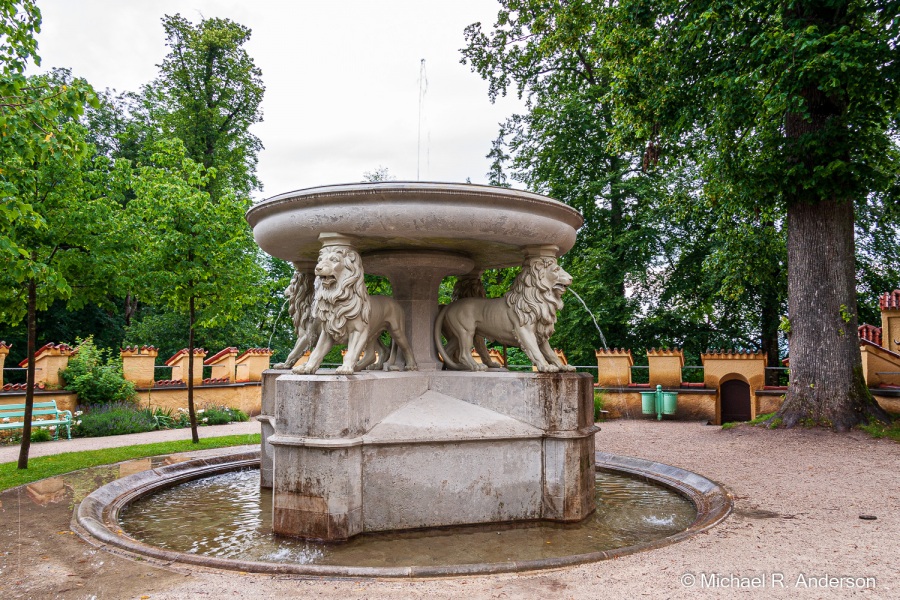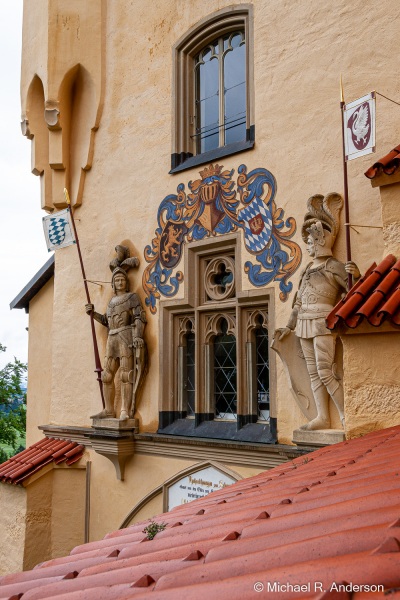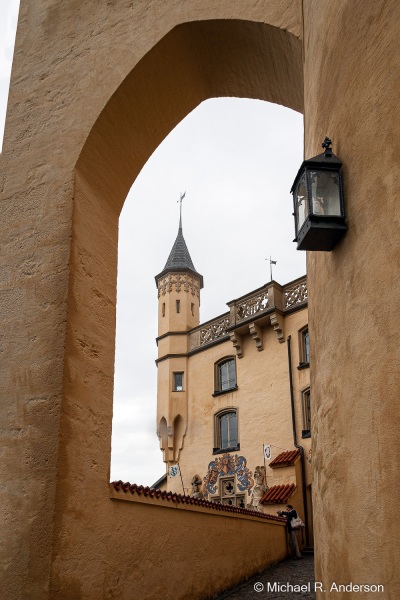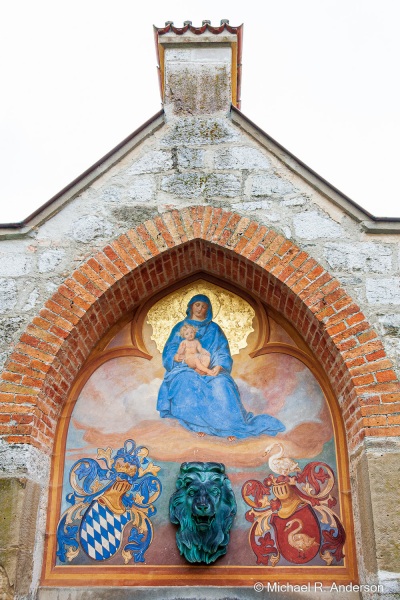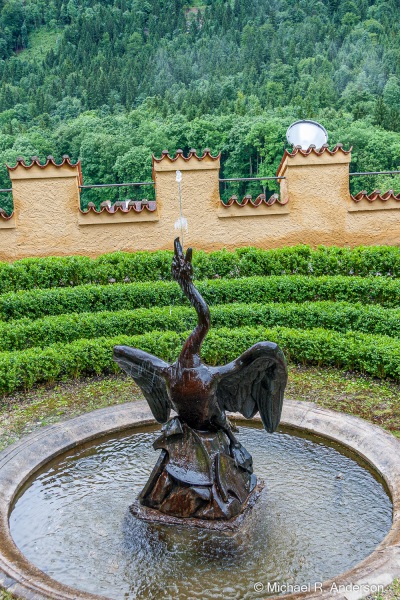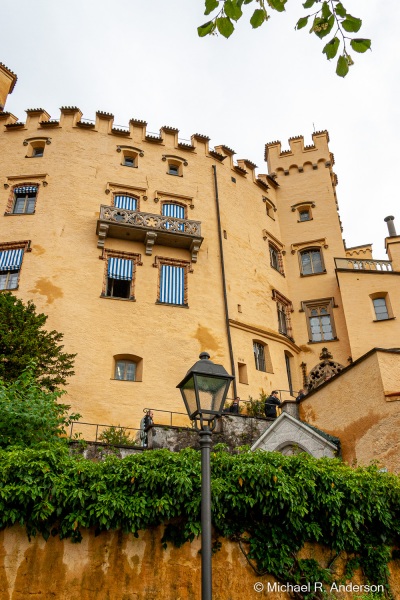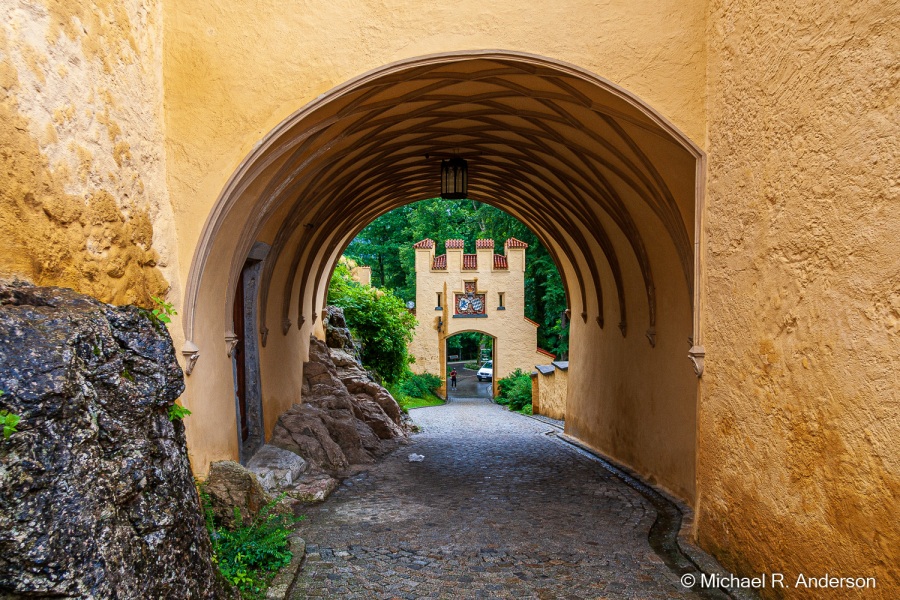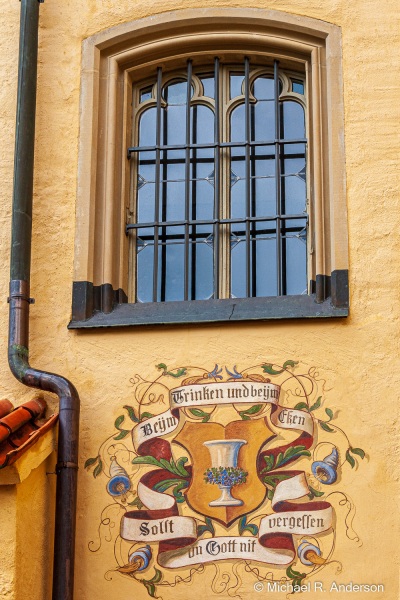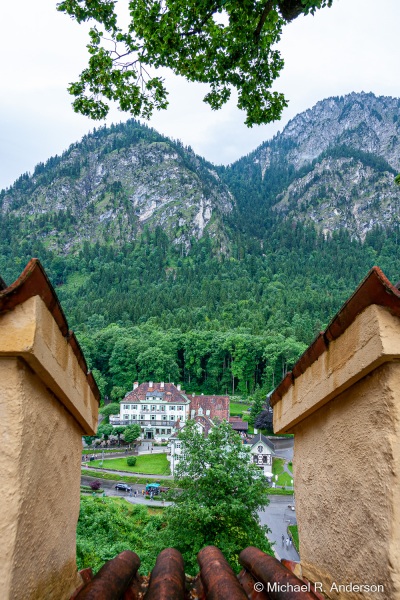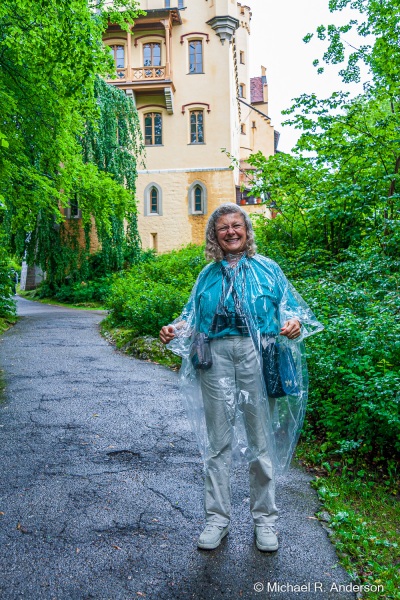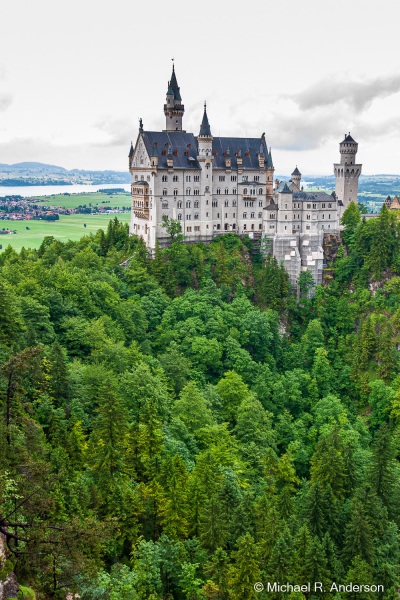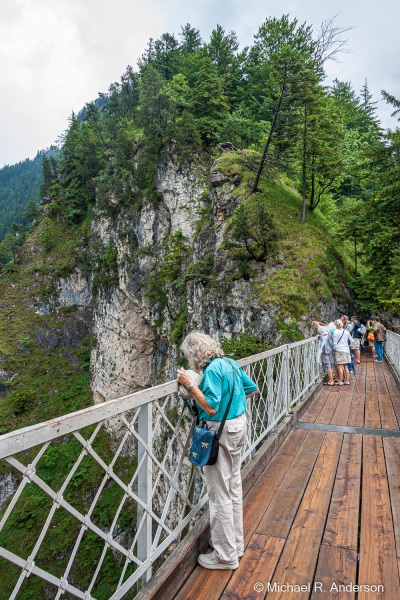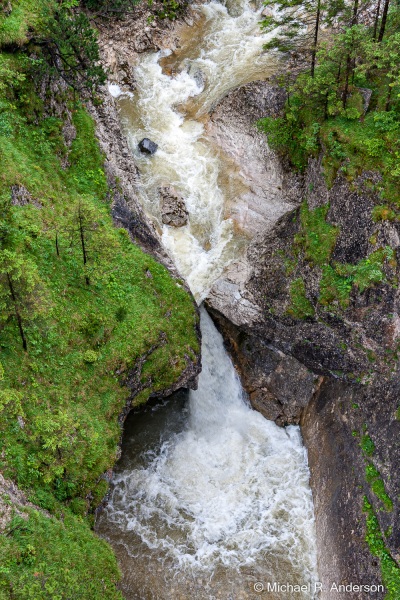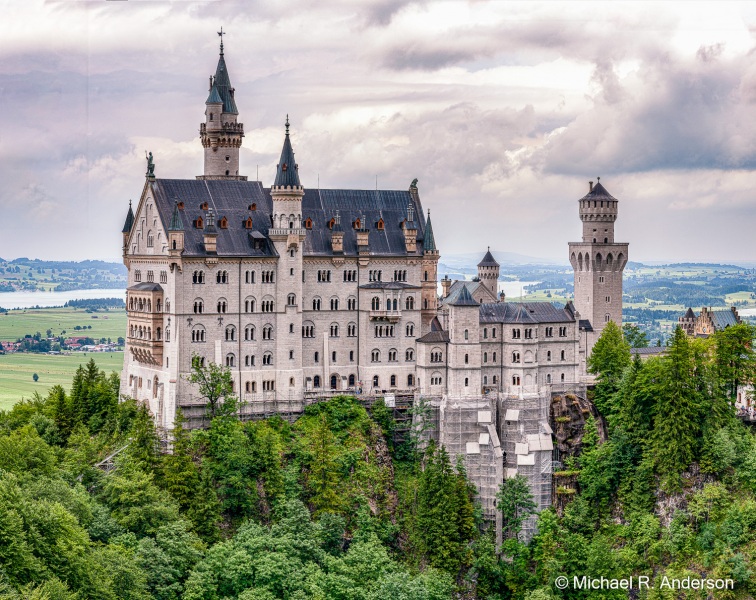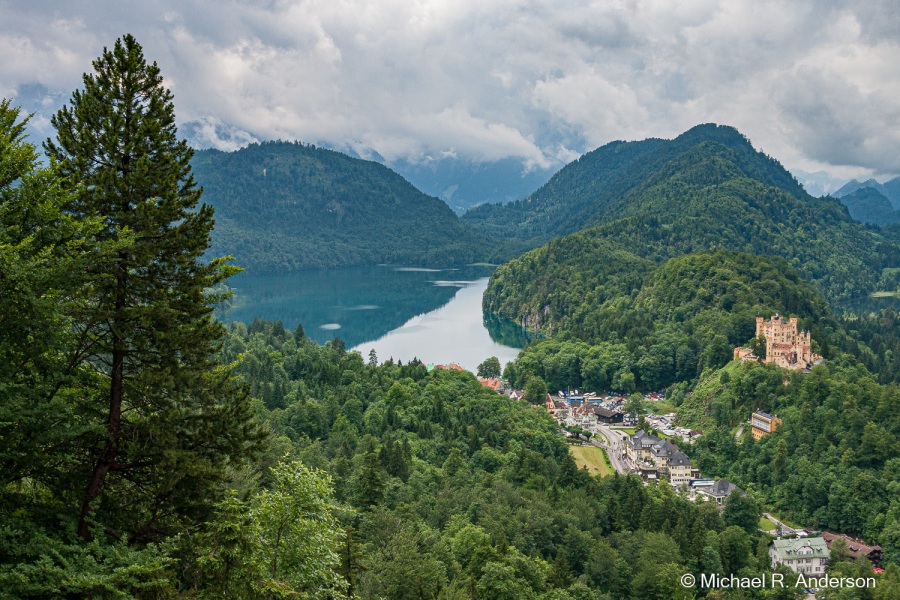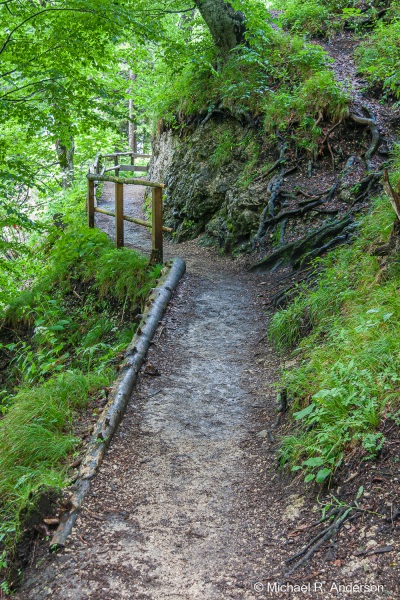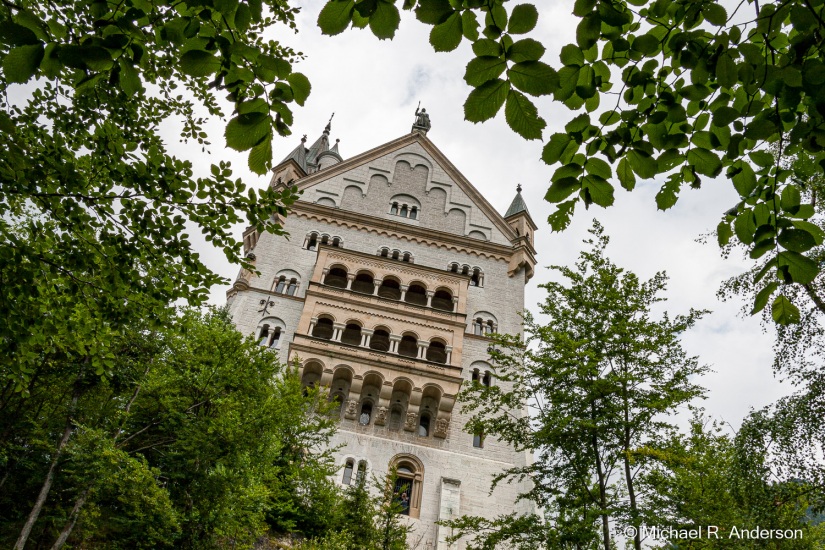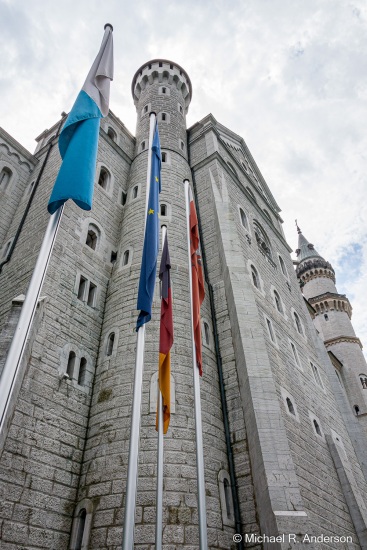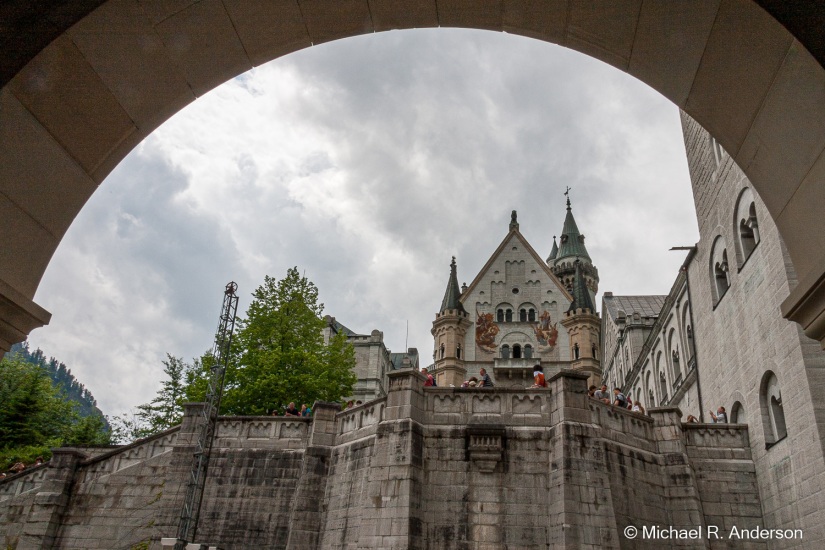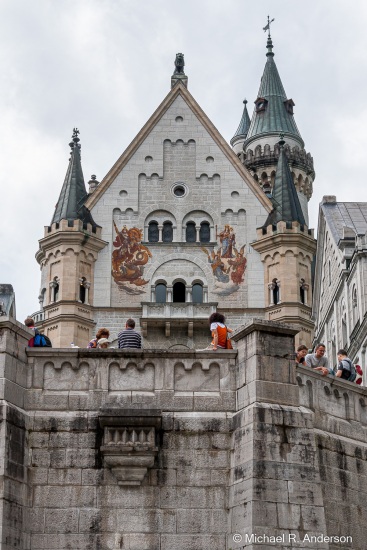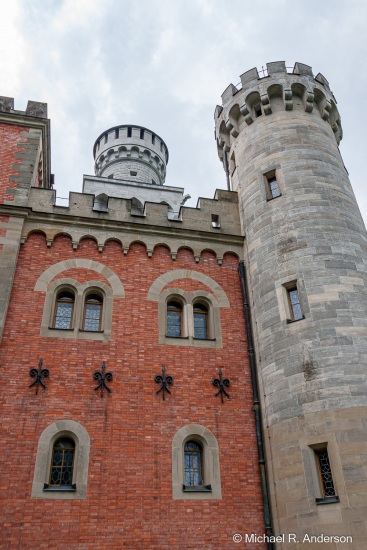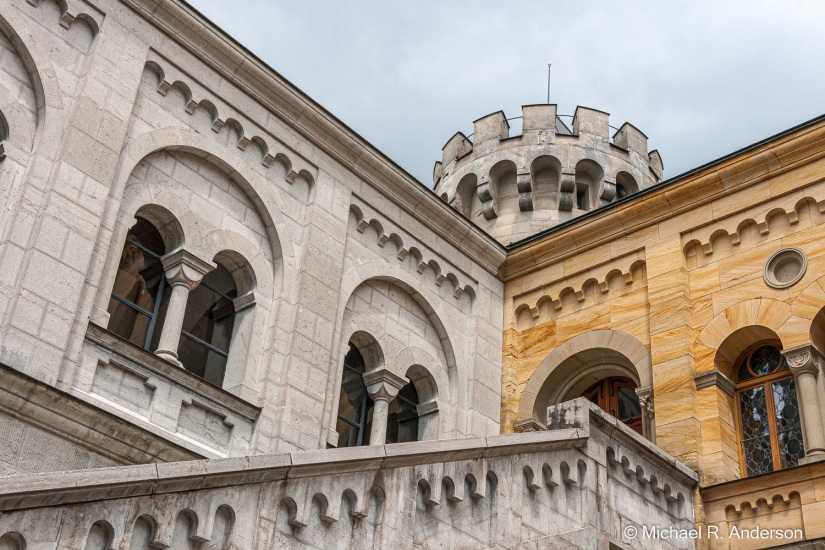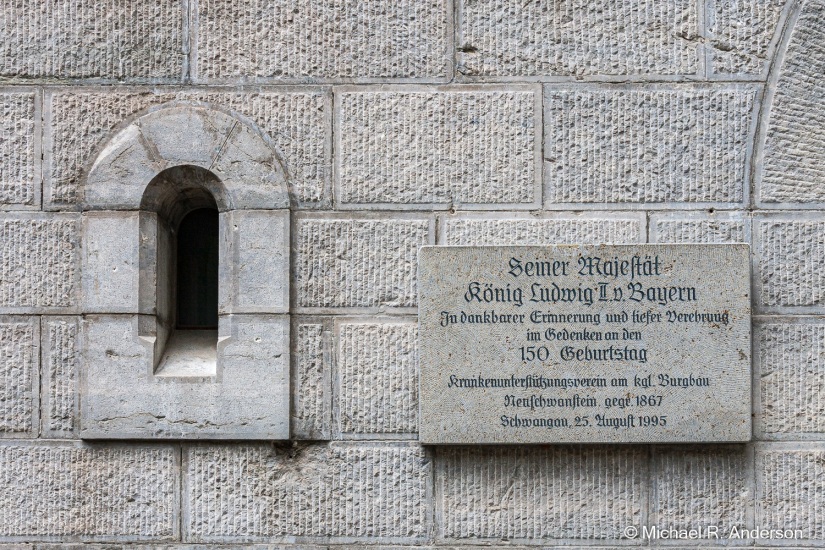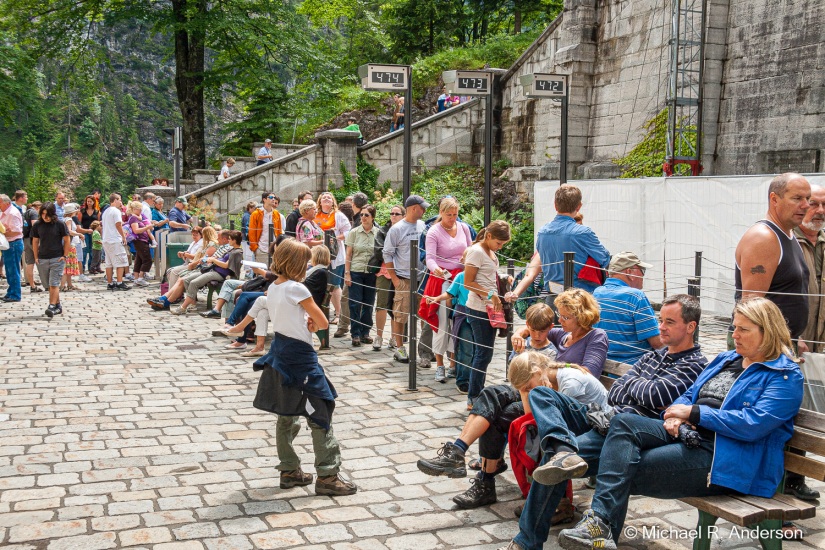We caught a train in Munich and headed south to Füssen, a small German town in the Bavarian Alps about a mile from the Austrian border. Though we had already visited castles on the Rhine River, we were on our way to see the two most famous castles in this part of Europe, Hohenschwangau and Neuschwanstein, known as the King’s Castles. Hohenschwangau has more history but Neuschwanstein is considered by many to be the most beautiful in Germany. This castle inspired the design of the Sleeping Beauty Castle in Disneyland. If you’ve looked at posters on the walls of a travel agency or paged through photo books of Germany, you’ve most likely seen a blue-sky version of this scene.
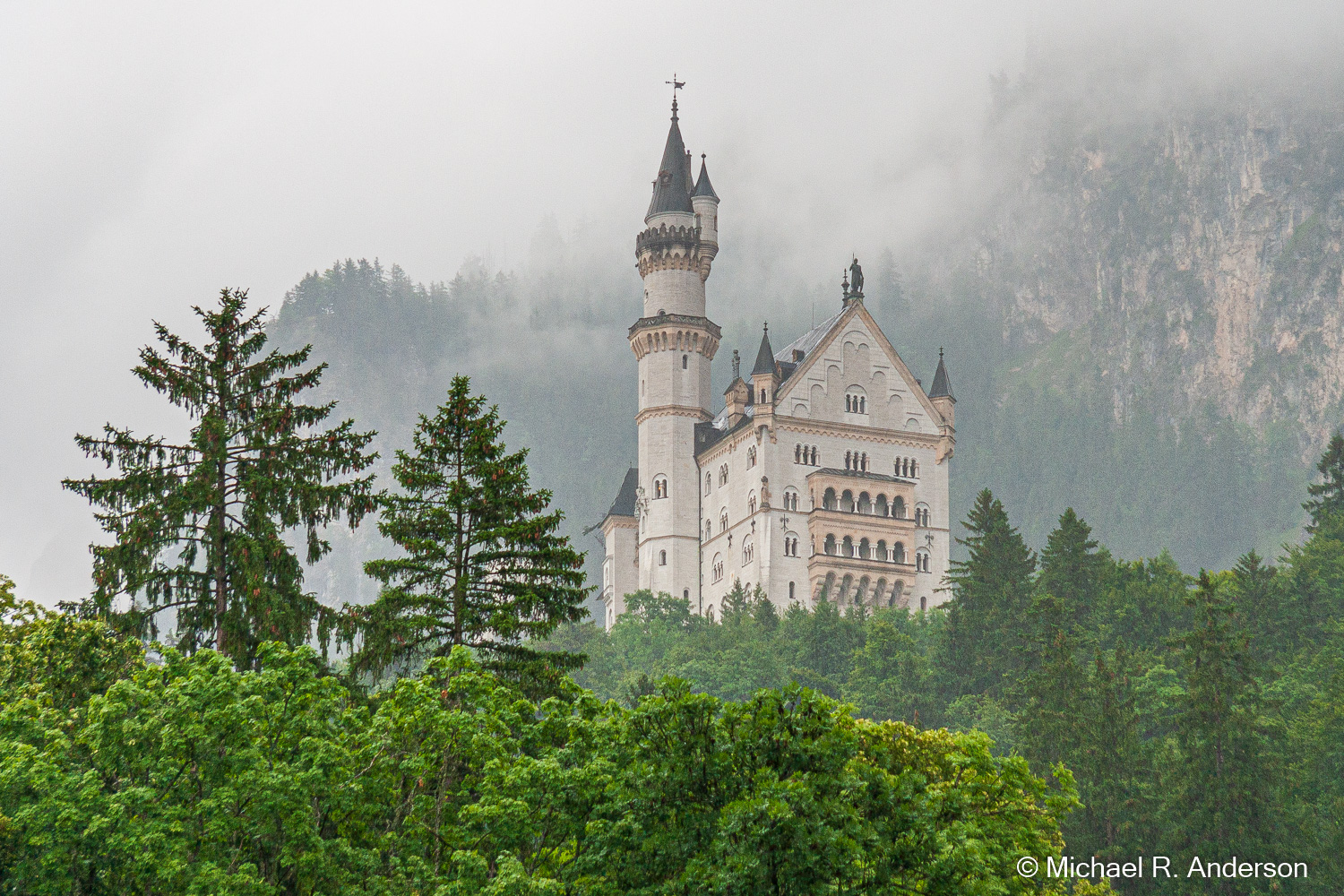
Hohenschwangau was originally built in the 12th century but eventually destroyed by Napolean. King Maximillian II of Bavaria rebuilt it in 1830. His son, Ludwig, spent summers here while growing up. When Ludwig became King Ludwig II at the age of 18, he continued to spend most of his time here. He soon ordered the construction of Neuschwanstein in the mountains above Hohenschwangau where he used a telescope to watch it being built. After 17 years, King Ludwig II moved in before many of the rooms were finished. He lived there for only 172 days before being declared mentally unfit to rule. Two days after his removal, the 40-year old “Mad” King Ludwig was found dead. Murder? Suicide? No one knows. The castle remains unfinished.
The closer the train got to Füssen, the darker the sky became. After nearly two weeks of hot, sunny weather, it looked like our trip to see some castles in the clouds would take place in gray clouds. By the time the train pulled into the station it started to rain, then pour. We walked quickly down the street trying to dodge the rain by ducking under awnings, into doorways, and under the umbrellas that covered sidewalk tables. A small cafe caught our eye so we quickly stepped in and ordered some tasty pastries, hoping the rain would be finished before the pastries were.
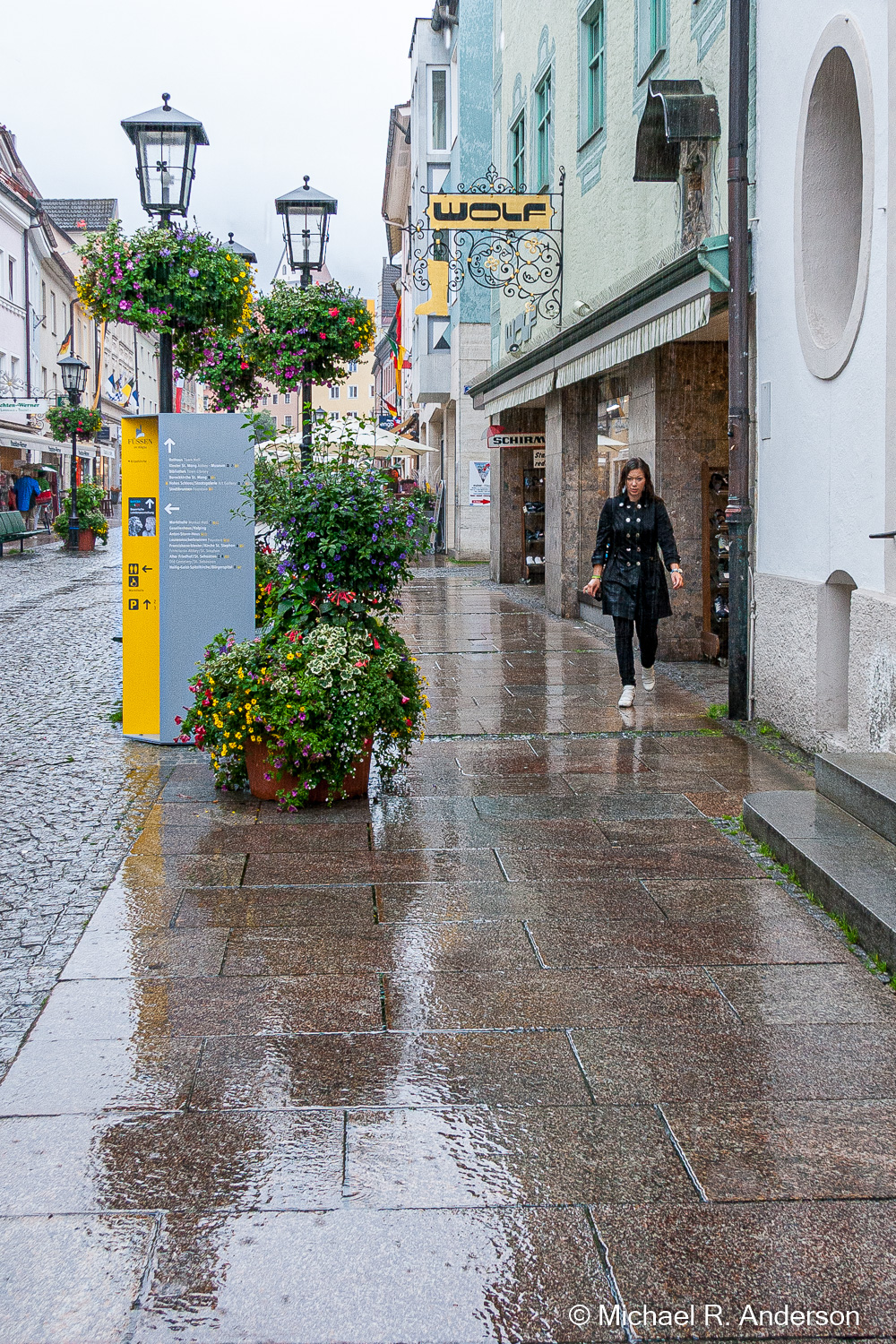
The rain let up around noon so we took a bus from Füssen to the small town of Hohenschwangau where you could get tickets for tours and buy souvenirs. The items in the souvenir store that appealed to us the most were the €2 plastic ponchos, the presence of which seemed to indicate that the weather we were experiencing was not unusual. Because of the iffy weather, we decided to start out by walking to the closer of the two castles, Hohenschwangau, before heading up to Neuschwanstein.
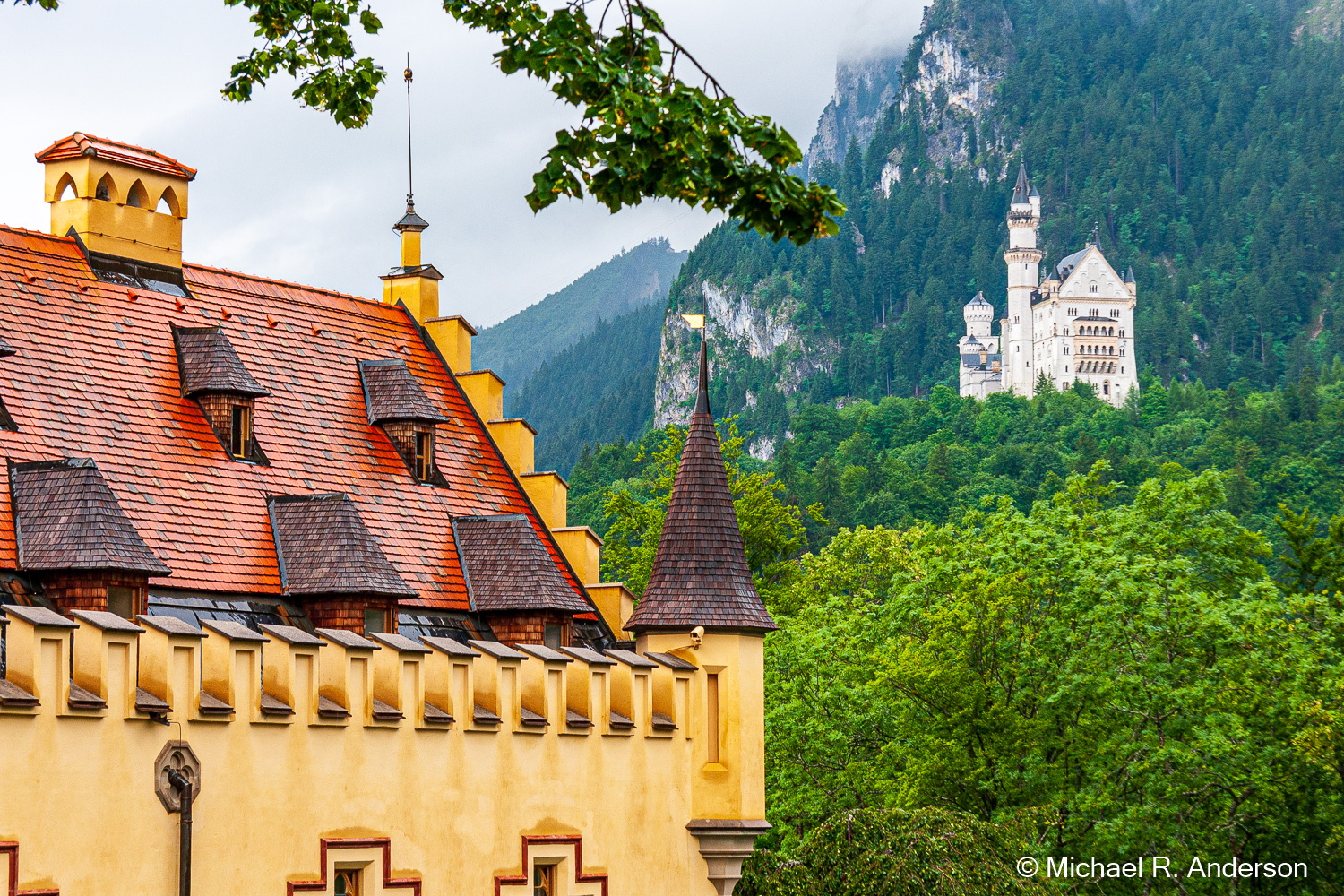
Tours of the King’s Castles are very popular, so if you go it would be a good idea to either purchase tickets before you go, or arrive on the earliest train to get tickets before they sell out. Having done neither, we spent our time walking around the grounds. The rain decided to visit us on and off during the day, but it was mostly light rain and though it left the skies gray and rather dull from a photographer’s point of view, it really saturated the orange colors of Hohenschwangau’s walls. The fountains, gardens, artwork on the walls and views of the town below were all interesting aspects of our unofficial tour.
Had the weather been more cooperative, we probably would have hiked the three-miles up to Newschwanstein. But, we opted to take a bus up to Marienbrücke (Mary’s Bridge), which sits south of the castle spanning the Pöllat Gorge. An old wooden bridge had been here when the castle was built but Ludwig had a new one built from which his guests could admire the view. From the bridge you get one of the best views of the castle and you can see Hohenschwangau Castle and the village of Hohenschwangau far below with the Alpsee in the distance. You can also continue across the bridge and hike on the Pöllat Gorge trail. We went a short way down the trail, used our parkas to keep us dry while sitting on a wet log, and ate lunch.
The walk down to the castle was quite easy. The best part is, not many people opt for walking so you can get away from the crowds for a while. Eventually, Neuschwanstein appears through the trees and you encounter the huge stone towers soaring up into the sky. I’ve never been to Disneyland but can imagine this castle being an inspiration to artists, authors, poets or anyone with a fertile imagination. As with Hohenschwangau, we spent our time touring the castle grounds. There were several long lines of patient adults and impatient children waiting for their tours to start.
It was interesting to see that, despite the ouster of the king for being mentally unfit and his subsequent murder/suicide, there’s a sign on the castle wall dated August 25, 1995 to “His Majesty King Ludwig II of Bavaria In grateful remembrance and deep reverence on the 150th birthday.” (I hope my translation is close enough though I must admit that I did have to look up “Verebrung.”)
In many ways, Neuschwanstein is somewhat of an anachronism. It was built at a time when castles were no longer needed as royal strongholds, and, despite its romantic design, it was built with running water, including flush toilets and hot water in the kitchen and baths, and it has a forced-air central heating system. That’s much fancier than the castle where King Arthur stored his round table.
We decided to walk back down from the castle instead of taking the shuttle bus and were not too surprised when it started to rain again. This time, however, the showers turned into a downpour so we really picked up our pace.
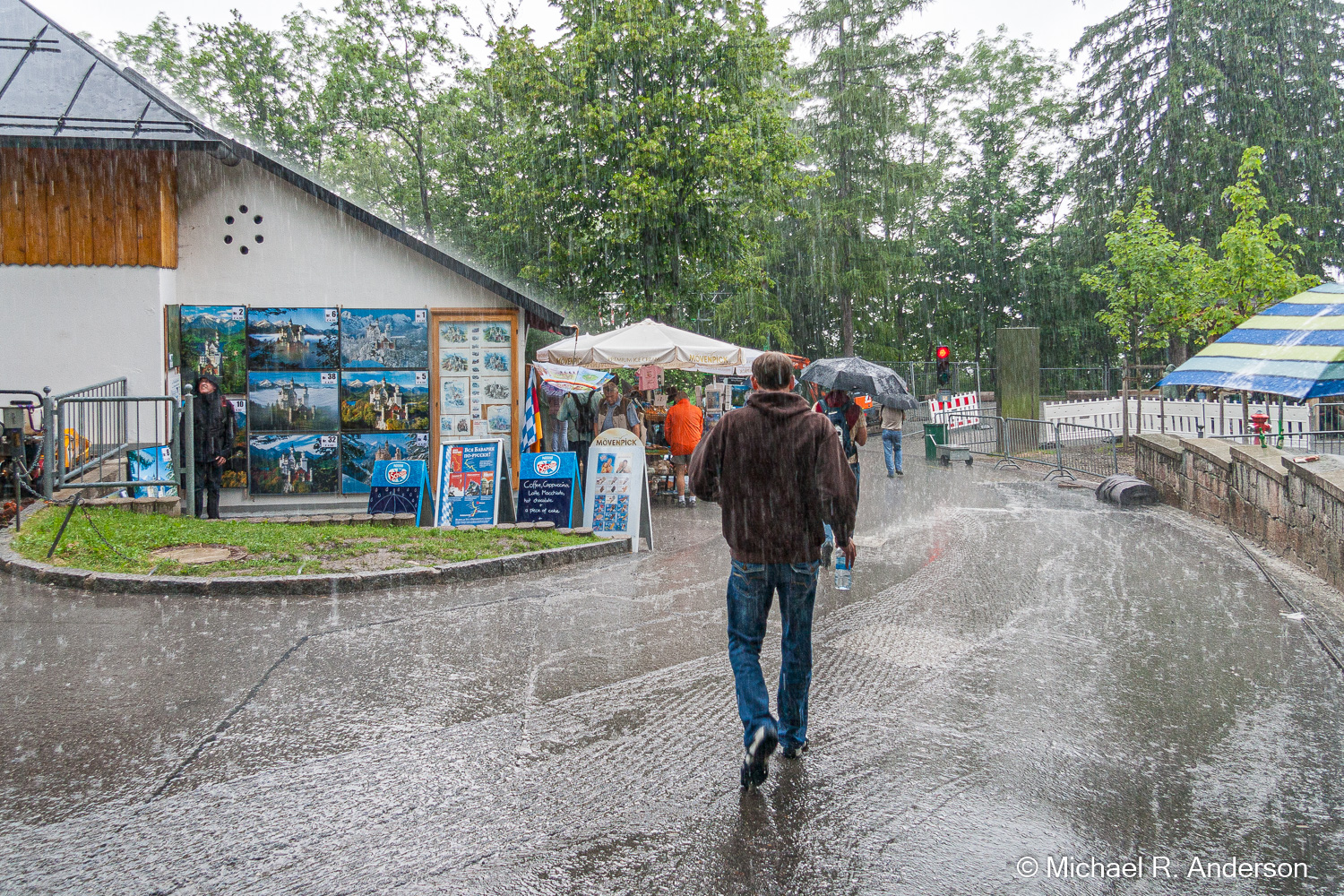
We took a bus back to rainy Füssen and a train back to sunny Munich and were glad to return to our hotel where we no longer needed rain ponchos and could change back into dry clothes.
As I did in a couple of my previous posts, I’d like to mention this location’s association with World War II. According to War History Online, Hitler created a task force for the “exclusive purpose of searching and looting art works from around the world. The command was given after German troops attacked France. It was the Fuhrer’s dream to open a ‘Fuhrer’s Museum’ in Linz, Austria displaying all the treasures they have plundered during their war exploits.” Neuschwanstein was the headquarters for this task force because it was far from Berlin and less likely to be bombed. Since the castle was unfinished, there was a lot of room to store the stolen art.
Some of the items which were successfully salvaged are now currently on exhibit at the Smithsonian Institute’s Archives of American Art. “Monuments Men: On the Front Line to Save Europe’s Art, 1942-1946”, includes documented photographs in black-and-white of soldiers bustling around crates in Neuschwanstein, such as the image below.
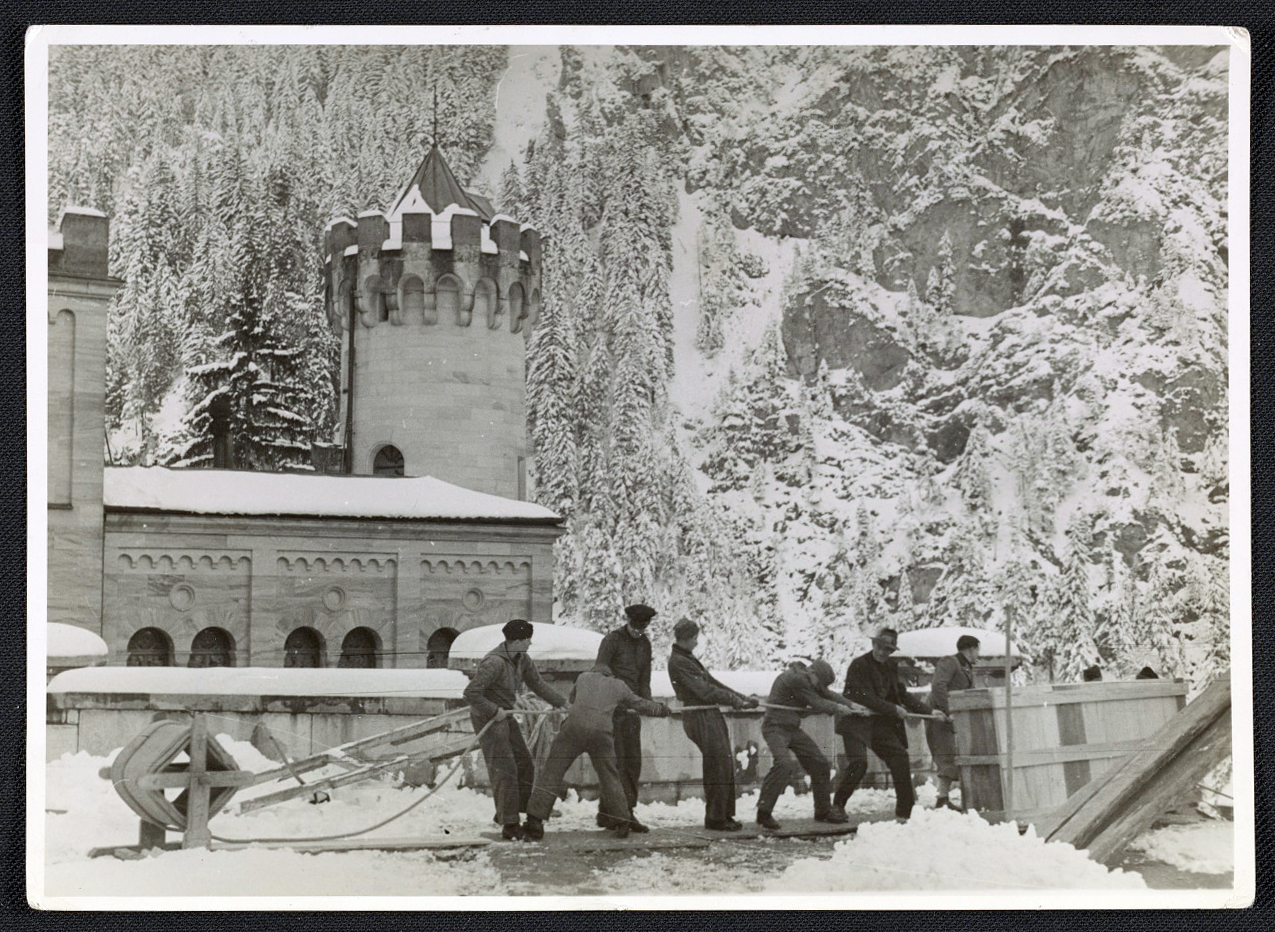
Thomas Carr Howe papers, 1932-1984. Archives of American Art, Smithsonian Institution.
Not all of the looted art and valuable objects were stored at Neuschwanstein. So much art was found deep inside an old salt mine at Altausee in the Austrian mountains that it took eighty truck loads to remove it.
The 2014 George Clooney film “The Monuments Men” was based on this World War II art recovery effort. After more than 75 years, the work has not yet been completed. The Monuments Men Foundation is still active and continues to look for the thousands of missing art pieces that have yet to be found and returned to their rightful owners.
